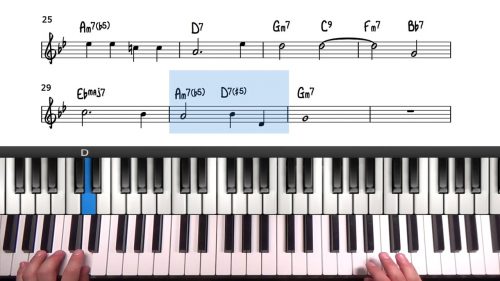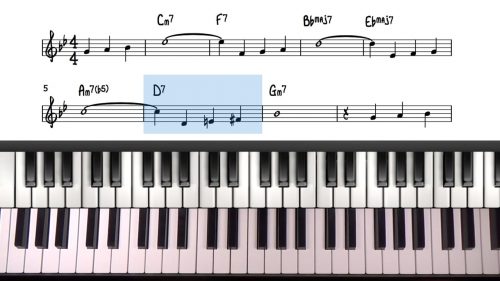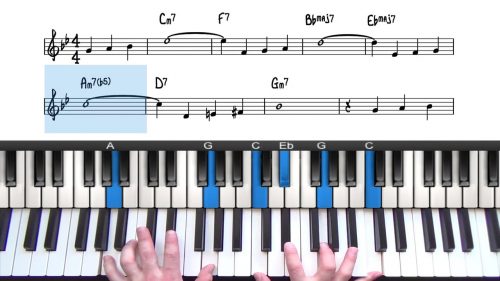Minor 251 Practice Drills
For Practice Slot 3, we are going to work on the minor 251 Progression.
Minor 251s are a completely different animal to the major 251, and they take a lot more time and patience to master. We will be working on these progressions for many years and it’s recommended to revisit these exercises from time to time.
Learning the minor 251s is a very gradual process, and something that we will develop at over many years.
A Variety Of Colours & Textures
One of the intricacies of minor harmony is the variety of colours and tensions we can add to the chords in the minor 251 progression. This in itself is gives us a huge amount of variations to work on. We’re going to cover the basic progression and we’ll also highlight a number of variations we can work on.
Type A & Type B ‘Starting Positions’
In the same way as the major 251, there are 2 important starting positions, Type A and Type B.
Type A always has the minor 3rd and the bottom and we can include the root at the top of the voicing. We can also look at this as a first inversion -7b5 chord.
The nice thing about having the root there, is that it allows us to voice lead the top 2 notes in contrary motion. The b7 of the ii-7 chord becomes the major 3 of the V7 chord, and the root becomes the #5/b13 of the V7 chord.
A Gradual Process
Remember that you will be learning and mastering these progressions over many years. You can always get quicker at finding them, and there is much to explore with inner voices over the 5 and 1 chords.
Lesson Downloads
-
Rootless Voicings Practice Planner File Type: pdf
Practice Tips
-
We can change the alterations over the V7alt chord. Experiment with playing the #5#9 colour, and the b9 #5 colour.
-
We can also experiment with the different 1 chords, for example we can play C-7, C-69, and C-maj7 which each has it's own unique colour.
-
Also try starting on a -11b5 chord. This is a more modern sound and the nice thing about this voicing is that every note moves up a minor 3rd to get to the V7alt chord.
-
Whenever you find a minor 251 in a tune that you are playing, stop and drill all the voicing variations covered in this lesson.
- That way we are playing them in context and it gives us a much better understanding of how to apply them in practice of actual tunes.








Hi, could you please consider practice sheet for -11b5 251’s in 12 keys? Thank you.
Hi Yuri 👋🏻
Apologies for the late reply here and thanks for this great suggestion.
Yes a -11b5 voicing sheet is definitely something we can create. I will get started shortly and send you a message once it is uploaded.
Cheers,
Hayden